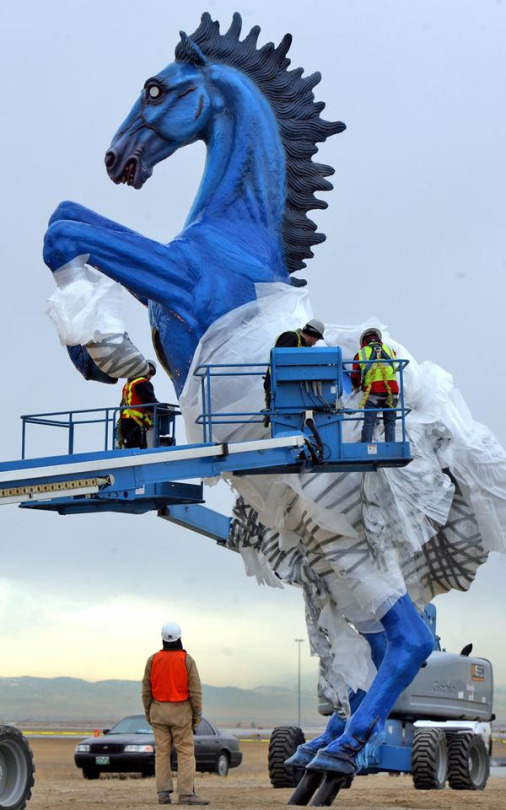Straight Talk About Public Art

Public art gets a bad wrap—plop art, art by committee, lowest common denominator art—and sometimes with good reason. However, a recent letter to the Westword by artist and co-founder of the Art District on Santa Fe Georgia Amar(whose work we have proposed and purchased for projects) is both quizzical and disappointing regarding Denver’s public art collection. Amar calls the city’s collection “neither aesthetic nor inspiring” and goes on to say “It has no meaning and is devoid of any message. It fails to engage. It does not reflect the spirit, intelligence and sensitivity of Denverites.” We’ll say it: them’s fighting words. Such absolute assessment seems not only off base but dangerously intolerant, especially for an artist whose livelihood depends on keeping a creative (i.e. open) mind.
A great art collection, whether one owned by an individual, a company or a city, should be diverse and should resonate with different people in different ways. If everyone liked every piece in a collection, chances are the collection would be not only safe but sad, cold oatmeal boring. We often counsel our clients to collect by the one-third rule, which is especially important when collecting by committee. You should absolutely love one third of the collection, feel so-so about third and dislike and even deign to hate that final third. Why? Because which thirds people get excited about will change for each and every single person. Such is the beauty (and the curse) of subjectivity. With over 400+ pieces in its collection, that leaves 133 works to not be excited about. But why focus on those? Why not focus on the ones that get it right?
Amar clearly has not done her research nor has she appeared to delve deep into Denver’s public art program. Yes, the City’s collection contains works by out-of-state artists (including internationally recognized artists like Bernar Venet and Sol LeWitt.) Yes, some works are more exciting than others. Yes, some artists are represented multiple times. Does any of this mean that there are no Colorado artists represented? That no pieces are “aesthetic nor inspiring”? That only the same artists are represented? Absolutely not. Such claims are not only ludicrous but they are inaccurate and downright false. When I think of my favorite artworks in Denver, I think of ones by Colorado artists: Lawrence Argent’s I See What You Mean, Patrick Marold’s Shadow Array, John McEnroe’s Model State, Sandra Fettingis’ I Know That You Know That I Know, Sean O’Meallie’s Balloon Man Running. Perhaps the reason why Patrick Marold has earned several public art commissions is not because he’s the go-to public art guy but because his use of materials and line approach a nirvana-like level of sophistication and beauty, that he truly understands the site and develops a site-specific proposal to fit it.
With Denver Arts & Venues’ new public art programs like the Urban Arts Fund aimed at graffiti abatement and P.S. You Are Here designed to leverage creative placemaking for neighborhood revitalization not to mention the reinterpretation of the public art ordinance itself, there are more opportunities for every and any type of artist (visual or not) to be involved in public art. For example, The Chime Project called for the musical composition for a new chime at the City & County Building. Last fall, the City commissioned its first public art dance performance, White Mirror, for Babi Yar Park by Lemon Sponge Cake Contemporary Ballet. Performed for one night only, the piece was devastatingly haunting and gorgeous and the perfect artwork for its location.
Let’s go back to the engagement idea. To say that Denver’s public art fails to engage the people is out of touch and way off base. How could anyone say Denver’s public art fails to engage when the most polarizing piece of public art in Colorado history, Luis Jimenez’s Mustang at Denver International Airport, earns conspiracy theories, starts petitionsand still has people arguing seven years after its installation. If that’s not engagement, what is?